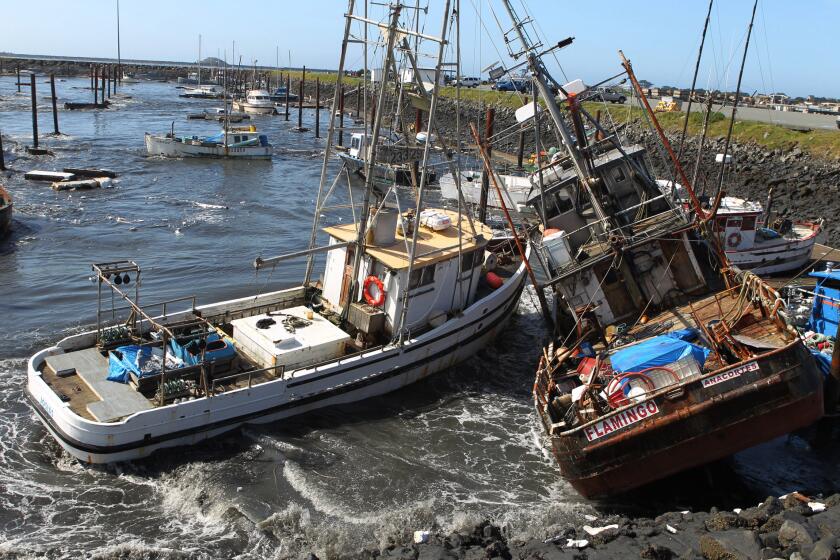Quake Maps Cite Risk South of Vanowen St.
- Share via
Seismic hazard maps showing areas in which homeowners will be required to report quake danger to potential buyers were issued Friday covering 300 square miles of the San Fernando and Santa Clarita valleys.
The maps issued by the state Department of Conservation show nonhazardous areas generally north of Vanowen Street and hazardous areas to the south.
When they become official in six months, the maps will define areas in which builders of duplexes and apartment houses will be required to prepare seismic hazard reports and plans for reducing the dangers before they build.
Also, owners of all dwellings within the zones designated as hazardous, including single-family homes, will have to disclose that status to buyers.
But the hazards covered by the maps include only earthquake-induced liquefaction and landslides, while ignoring the hazards of shaking.
The odd result in the latest maps is that people living in the epicentral, and often the most heavily damaged, areas of the 1971 Sylmar-San Fernando and the 1994 Northridge quakes are in areas that are not designated as hazardous.
This means that property in those areas will not be subject to the new requirements, despite two big quakes within a quarter-century.
State officials said Friday there is no timetable for preparing maps that will include shaking.
The maps are being issued pursuant to legislation adopted after the 1989 Loma Prieta earthquake, when the Marina district of San Francisco was severely damaged due to liquefaction.
Liquefaction is a process whereby water-saturated soils turn to jelly under heavy shaking. The standard for declaring an area subject to liquefaction in the maps is a finding that, at least during parts of the year, the water table rises to within 40 feet of the surface.
Foundation damage to homes due to liquefaction resulted in an average of $67,000 in repair costs in the Northridge quake. But it may cost a homeowner only $3,000 to $4,000 to strengthen his or her home against it, state officials said.
The latest maps show danger of liquefaction in areas along the Los Angeles River, which originates in the western San Fernando Valley and flows through the southern Valley. Also, much of the northern Santa Clarita Valley is subject to liquefaction.
There also is a highly irregular bulge northward of potential liquefaction in the West Valley.
Altogether, the liquefaction zones are larger than those showing up on maps produced by geological authorities for the San Fernando Valley several years ago under a different program.
It may be difficult for some homeowners to know whether they are in the hazard zones or not, without checking with authorities, because the boundaries between zones are so irregular and street names are illegible on the smaller public maps that were released Friday.
Landslide zones are, as would be expected, in hillside areas, but are so highly irregular as to be undecipherable in many instances.
The Department of Conservation has plans to produce 38 maps, each covering 60 square miles, by next June. Maps for most of the rest of Los Angeles will be released then.
Although the initial maps are labeled preliminary, and public comment is solicited before they are made final, officials said Friday that their experience has been that there are very few comments and the maps generally undergo only minor revisions.
The director of the department, Lawrence J. Goldzband, said Friday at a news conference that his hope is that the maps will encourage residents to consider strengthening their homes against earthquake dangers.
“Our overall goal is safer homes,” he said.
However, he acknowledged, there is nothing in the law that requires owners of existing dwellings to do anything, except inform buyers of the hazard.
Llewellyn Chin of the California Assn. of Realtors, who also appeared at the news conference, said there is little evidence thus far that revealing that one lives in a hazardous zone will result in decreasing sales value.
It is up to local and county building departments to enforce the state requirement for hazard investigations and mitigation plans by builders in the hazardous zones.
To obtain the maps, at the cost of printing, call the Department of Conservation, Los Angeles office, (213) 620-3560.
More to Read
Sign up for Essential California
The most important California stories and recommendations in your inbox every morning.
You may occasionally receive promotional content from the Los Angeles Times.










